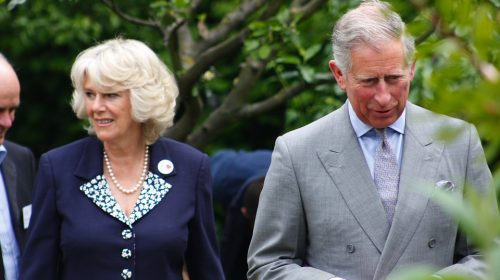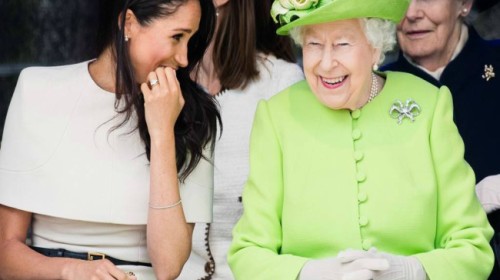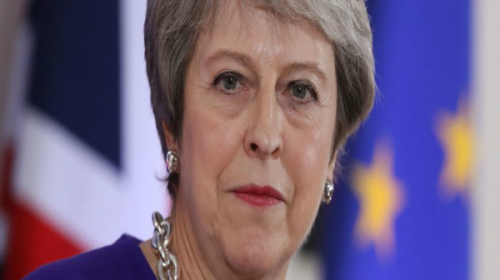“Narendra Modi passed in first class with distinction marks from some states including Uttar Pradesh,” the Prime Minister said in his self-appraisal for his two years in power. He based his claim on various surveys made by different media houses.
The idea was behind this superlative appraisal was to instill confidence among people at large, particularly politically critical in poll-bound UP, that he was sincerely working to deliver goods to them. This was also to give a certain buoyancy to the BJP’s rank and file who have to aggressively fight against two powerful regional parties, Samajwadi Party and Bahujan Samaj party, down to the booth level.
Modi and Amit Shah’s speech at the public rally at Parade Ground in Allahabad makes one thing clear. Irrespective of whether or not Home Minister Rajnath Singh is formally declared as chief ministerial nominee for UP, the party will essentially bank on Modi’s charisma and his supposed achievements in the last two years to grab power in India’s most populous state. This was precisely the reason why Amit Shah candidly said “If UP gives full majority to BJP in 2017, then the path for Narendra bhai will automatically be clear for 2019. The road to power at the Centre goes through Lucknow and same will be true in 2019 also. With your blessings, Modi government will be in power once again.”

Image courtesy: Twitter/@CNNnews18
Talking about 2019, three years away from now, is not necessary. These are assembly elections, and no assembly election has been linked to parliamentary election, or has been a referendum on the performance of the central government. But Shah obviously is trying to strike an emotional chord with people in Modi’s name, the way that chord had been struck in 2014.
The size and response of the crowd at his public rally was surely very enthusing to Modi and the rest of his party men and women. The `Modi Modi’ chant was back at the public rally on Monday evening, chanted with the same vigour as was heard two years ago, during the run up to the parliamentary polls of 2014. To keep them engaged, Modi asked them to light the torch of their phones to greet voters in Assam, who gave the BJP a historic mandate. The idea was to create a light and sound effect, as the crowd chanted ‘Bharat Mata Ki Jai’. But when the rally concluded at around 6.50 p.m., it was still not dark enough to create the desired effect which Modi would have wished.
Beyond this trivia, three significant things emerged out of this mega public rally from the BJP’s perspective.
Firsly, the BJP made a conscious attempt to showcase that the party was unified in its electoral fight in UP. All the union ministers who belonged to UP were on the dais. While the incumbent party chief Keshav Prasad Maurya, an OBC gave a brief speech ahead of Rajnath Singh and Amit Shah’s speech, former state party chief Lakshmi Kant Vajpayee, a Brahmin was given the honour to preside over the programme. The BJP also tried to contain the criticism that the party elders like LK Advani and Murli Manihar Joshi were completely sidelined. The party leadership though didn’t really do anything to give the impression that they have any role in decision-making. The party made sure that they attended the rally and were kept enthused—Modi chatted with Advani and used his phone, and called Joshi as a source of inspiration. Through this, it tried to suggest that the party cared for them. After all, the two leaders have been Atal Bihari Vajpayee’s fellow travelers. Though Vajpayee has been immobile for the past several years, he still has an emotive connect with a section of people in the state.
Modi made conscious efforts to introduce himself as a ‘UP wala’. “Look at this dais, and you will realize what clout UP wields in the union government—the Prime Minister is from UP, the home minister is from UP, defence ministerManohar Parrikar (elected to Rajya Sabha from the state) is from UP. You see a host of other ministers from Uttar Pradesh.”
Speaking prior to Modi’s arrival on the dais, BJP president Amit Shah reminded the audience (and people who watched the rally on TV), that Modi represented the Banaras parliamentary constituency, and that the state was important for the BJP.
Secondly, it was clear from Modi, Shah and Rajnath Singh’s speeches that the top BJP leaders were presenting a heady cocktail. Shah raised an emotive pitch by referring to the Mathura violence and some Hindu families’ migration from Kairana, and even tried to create a fear psychosis or a polarisation of sorts. Modi focused on the development and governance part. “The people of UP can’t take the Kairana migration issue lightly. Do you want this kind of migration to happen elsewhere? You have to throw out the Samajwadi Party government,” he said. The BJP president further said,”SP, BSP and Congress are working with a common agenda to somehow obstruct Narendra Modi from doing his work.”

Modi spoke extensively on the development agenda, and said that development requires a resolve to do away with arrogance, nepotism, casteism, communalism, corruption, etc. Electricity supply has been a major issue in UP and Modi went at length to explain what his government had done. He said that out of 1,529 villages which did not have even electric poles and wires, his government had succeeded in erecting the poles, and connecting the villages with wires from sub-stations in 1352 villages. “We can’t allow a state as big as UP to go on the destruction path. Only if UP develops can India become the number one country in the world.”
Thirdly, Modi and Shah harped on the theme that the SP-BSP and Congress are hand-in-glove and are part of the same team. “There is a jugalbandi between SP and BSP—I rule for five years, loot the state and hand over power to you for you to loot for another five years. And this rotation continues. Neither the SP nor the BSP takes any action on corruption charges of the previous regime,” he said.







